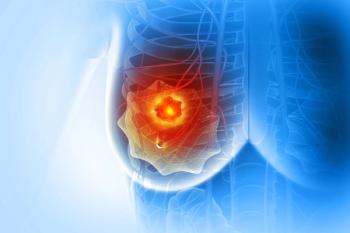
Research Shows Healthy Women Have Cells in Breast Tissues Resembling Cancer
Key Takeaways
- Chromosomal abnormalities in normal breast cells challenge current understanding of breast cancer's genetic origins and early detection methods.
- Study of 49 healthy women found rare aneuploid epithelial cells with chromosomal changes similar to invasive breast cancer.
Because these cells are present throughout the body, there may also be implications for other cancer types.
Findings from a new study published in Nature show that some breast cells that appear normal in healthy women may contain chromosome abnormalities that are often associated with invasive breast cancer. This research, according to the authors, questions established thinking on breast cancer’s genetic origins and may affect early detection methods. Additionally, the data could influence the understanding of what deems tissues within the body “normal.”1
For this study, investigators enrolled 49 healthy women without known disease who were undergoing breast reduction surgery and examined samples. Specifically, the investigators assessed the chromosomal copy number changes in normal breast tissues compared with clinical breast cancer data. Single-cell DNA sequencing was applied to profile alterations in 83,206 epithelial cells from the healthy women, and single-cell DNA and assessments for transposase-accessible chromatin sequencing co-assays to the samples of 19 women. The epithelial cells line and cover the inside and outside of the body and are believed to give rise to cancer.1,2
According to the findings, all of the enrolled women had rare aneuploid epithelial cells (median: 3.19%) within normal breast tissues. The investigators observed that the women’s age had correlated with this, with older women accumulating more of these cellular changes compared with younger women. In addition, many aneuploid epithelial cells (median: 82.22%) in normal breast tissues had undergone clonal expansions and harbored copy number alterations that were similar of invasive breast cancers.2
The most frequent changes were additional copies of the chromosome 1q, as well as losses of chromosomes 10q, 16q and 22q. The investigators note that prior research have shown that specific genes in these regions were also associated with breast cancer.1
“A cancer researcher or oncologist seeing the genomic picture of these normal breast tissue cells would classify them as invasive breast cancer,” said principal investigator Nicholas Navin, PhD, chair of Systems Biology, in a news release. “We’ve always been taught that normal cells have 23 pairs of chromosomes, but that appears to be inaccurate because every healthy woman that we analyzed in our study had irregularities, bringing up the very provocative question about when cancer actually occurs.”1
The investigators note that as developments in earlier detection methods that use molecular diagnostics, ductal carcinoma in situ, and biopsies continue, these data present potential challenges. Notably, they highlight the potential risk of identifying false positives, because the cells can mistakenly be confused with invasive breast cancer.1
Interestingly, the investigators note that because epithelial cells are found in many systems of the body, the results may have possible implications in other organs. Co-assay profiling demonstrated that the aneuploid cells were primarily associated with the 2 luminal epithelial lineages, and spatial mapping showed that they localized in ductal and lobular structures with normal histopathology. Further research is needed to specifically identify what potential risk factors—and if there are any—could contribute to these cells becoming cancerous.1,2
“It just shows that our bodies are imperfect in some ways, and we can generate these types of cells over our lifetime. This has pretty big implications not just for the field of breast cancer, but potentially for multiple cancer types,” said Navin in the news release. “This doesn’t necessarily mean that everyone is walking around with precancer, but we need to think about ways to set up larger studies to understand the implications for developing cancer.”1
REFERENCES
University of Texas MD Anderson Cancer Center. Healthy women have cells that resemble breast cancer, study finds. News release. November 20, 2024. Accessed November 20, 2024.
https://www.eurekalert.org/news-releases/1065494 Lin Y, Wang J, Wang K, et al. Normal breast tissues harbour rare populations of aneuploid epithelial cells. Nature (2024). doi:10.1038/s41586-024-08129-x
Newsletter
Stay informed on drug updates, treatment guidelines, and pharmacy practice trends—subscribe to Pharmacy Times for weekly clinical insights.

















































































































































































































